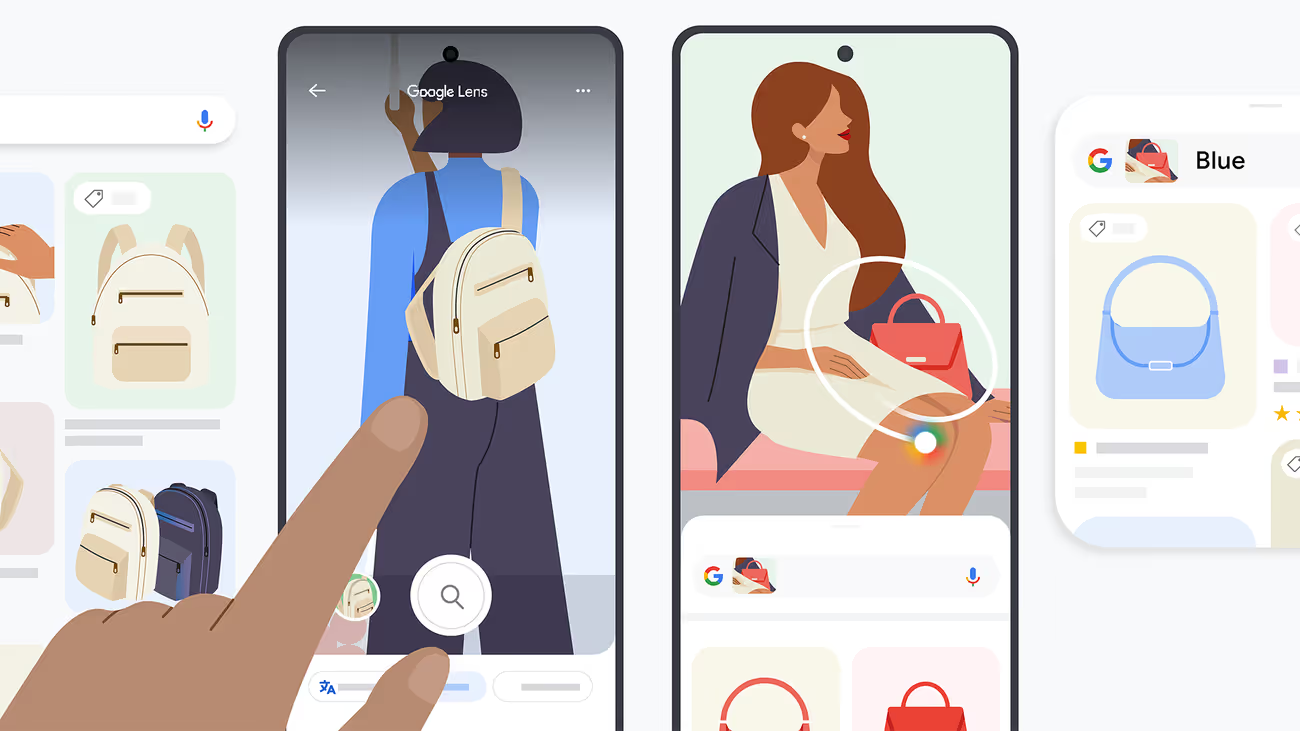
Google’s AI-Powered Image Search: Technology and Luxury Industry Impact
How the AI Image Search Works and What It Can Do
Google’s new AI-driven image search builds on Google Lens visual recognition with advanced AI models:
- Recognizes What You See: Lens can already identify billions of objects (from plants to products) by matching web images. Now, generative AI helps it interpret novel or unique images and provide instant AI-generated overviews about them.For example, if Lens finds an unusual design or texture, it can generate a descriptive summary without you even typing a question.
- Instant Product Details: When Lens recognizes a shoppable item, it instantly displays key product info – reviews, price ranges across retailers, and where to buy. Google connects to its Shopping Graph (with data on 45 billion products) to identify the exact item and pull in details. This means snapping a photo of, say, a designer bag will show its name, average rating, prices at various stores, and purchase links.
- Voice and Multimodal Search: The new Lens lets you ask questions by voice about an image, just as you’d ask a friend. You can point your camera and ask “What brand is this?” or “Is it leather?” and get answers. You can also refine visual searches with text. Google’s multisearch feature allows adding words to an image query – for instance, search with a photo of shoes and add “red” to find that style in red color. This makes searches more personalized and specific.
Google Lens can identify a product from a photo and display key details like pricing, reviews, and buying options. In this example, Lens has recognized a backpack (with the brand clearly identified) and is ready to show an overview. The AI-powered system uses Google’s massive product database to find the exact item and compare prices across retailers.
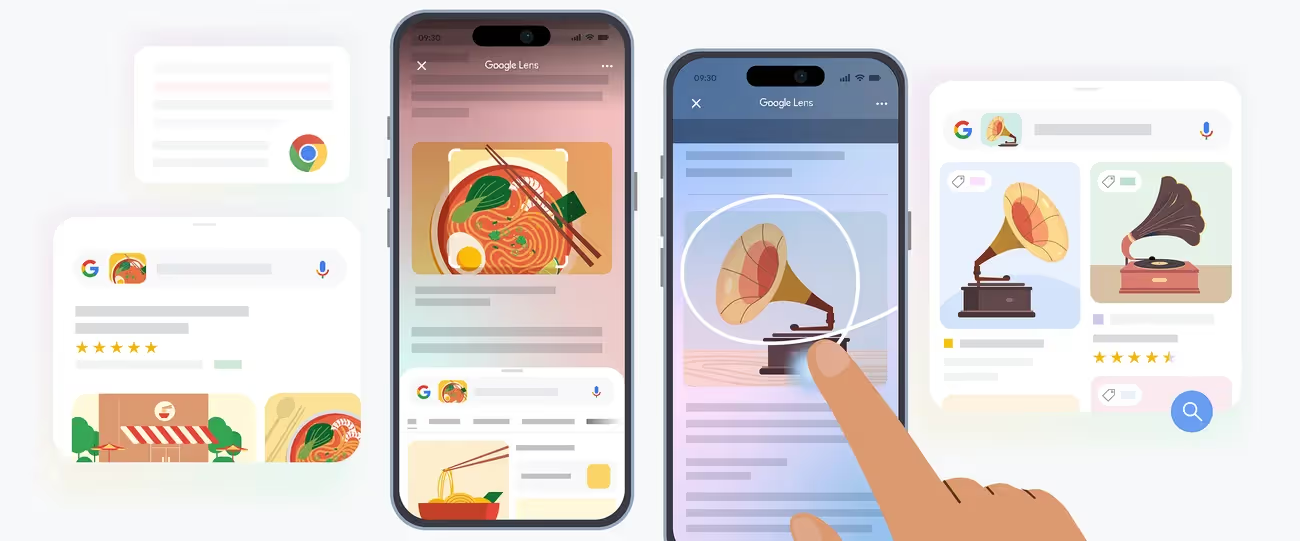
Behind the scenes, AI is enhancing how results are presented: Google’s Search Generative Experience (SGE) can produce an “AI Overview” at the top of results, even for image queries. This overview is a concise, synthesized answer about the image’s content. For example, if you snap an unfamiliar luxury handbag, the AI Overview might describe its style and features and then direct you to relevant webpages. These AI overviews started in English and are expanding globally for supported languages.
Notably, Google has also begun integrating advertising and shopping features into visual search. Merchants can place Shopping ads in Lens results, so promoted products appear alongside organic matches. And if you’re browsing content on your phone (watching a video or reading a blog), features like “Circle to Search” let you draw a circle on any item on screen to search for it – effectively letting you shop from videos or images instantly.
Rollout Timeline and Availability
Google’s AI-powered search features have been gradually rolling out. Initially, the Search Generative Experience (which includes AI overviews in search) launched in the US and a few markets via Search Labs in 2023. In late 2023, Google expanded SGE to 120+ countries and introduced support for languages like Spanish, Portuguese, Korean, and Indonesian. However, the European Union was notably excluded at first due to regulatory concerns. Google held back in regions like the EU and UK, similar to how it delayed Google Bard’s launch in Europe, citing compliance with local data laws. As Google works through EU privacy requirements, it is expected to bring these AI search features to European users. In fact, industry watchers predicted Google would announce broader availability (including Europe) by spring 2024.
France is anticipated to gain access by April 2025, aligning with this timeline. By that point, French users should be able to use AI image search via the Google app or Chrome, with AI overviews likely available in French. Google hasn’t given an exact France launch date publicly, but the pattern with other regions and the resolution of EU data questions suggest a rollout in early 2025.
In the meantime, many of the visual search functions are already technically “available globally” in English. For instance, English-language users in France can use Google Lens today to identify products, and they may see AI summaries if their language is set to English. The full localized experience (French AI answers, and default availability without opting into Search Labs) is what’s expected to go live by April. Google’s staged rollout strategy is to ensure compliance and gather feedback, so French luxury brands and retailers should prepare now, as this powerful visual search capability is imminent.
How It Will Transform Luxury Shopping Experiences
AI-powered image search is poised to reinvent how consumers discover and shop for luxury goods, both online and in the real world:
- Effortless Product Discovery: Shoppers can find items instantly from any inspiration. Instead of knowing a product’s name or scanning through catalogs, a user might snap a street-style photo of someone’s handbag or a screenshot from Instagram and immediately identify the luxury item. Google Lens will tell them the brand and model, and show where it’s sold This visual search discovery lowers the barrier to finding products – a boon for luxury fashion where inspiration often strikes from seeing an item “in the wild.” McKinsey notes that consumers today feel overwhelmed by endless options online, and AI-powered search and curation can help them more effectively discover products that match their desires. In short, finding that limited-edition sneaker or the exact shade of a Dior dress becomes as simple as taking a photo.
- Omnichannel, Instant Gratification: The technology bridges offline and online shopping. Customers in a boutique can photograph an item to see rich details and comparisons – for example, checking if the item is in stock in a different color or available nearby. Google even piloted an in-store Lens feature that tailors results to the store you’re in, showing which similar items are in-stock at that location. Imagine pointing your phone at a jacket in a luxury department store; the search might reveal, “This style is available here in blue and black, and one floor up you can find a similar cut from another brand.” It makes store visits more interactive and informative. Conversely, if you’re at home watching a fashion show video, you can circle a dress on the screen and immediately shop it via Lens without leaving the video. This seamless integration of channels means the moment something catches a customer’s eye, they can move toward purchase.
- Personalized and Interactive Searches: AI image search allows more personalized queries, which enhances the luxury experience. For example, a user could upload a photo of an outfit they like and add text like “for evening” or “add a pop of color.” The AI can then return a curated selection of luxury accessories that complement that outfit (perhaps a matching clutch or shoes), effectively acting as a personal stylist. Because Google’s multisearch lets users refine by color, style, or other attributes shoppers get tailored recommendations. This level of personalization – finding exactly the red suede version of a shoe, or only showing handbags that match a certain dress – mirrors the kind of bespoke service luxury shoppers expect. It’s like having a digital concierge: you show it what you like, and it surfaces highly relevant options.
- Richer Product Information and Confidence: By leveraging AI, Google can provide more context that aids high-end purchases. Luxury items are often considered purchases; buyers research authenticity, craftsmanship, and style history. AI search results can include that context. For instance, an AI Overview for a vintage Rolex photo might mention the model’s year and iconic status, with links to expert reviews. Reviews and ratings aggregated in the results give shoppers confidence (e.g. “95% of reviewers love the comfort of these Louboutin heels”). Furthermore, Google’s virtual try-on tools – though currently limited – hint at the future: AI-driven try-ons for luxury apparel and accessories. Google has already launched an AI virtual try-on for clothing in the US, which shows garments on models of various body types.. We can expect similar capabilities to expand, allowing a customer to visualize a luxury dress or watch on themselves (via AR or rendered models) before buying. This reduces hesitation and enhances the experiential aspect of luxury shopping online
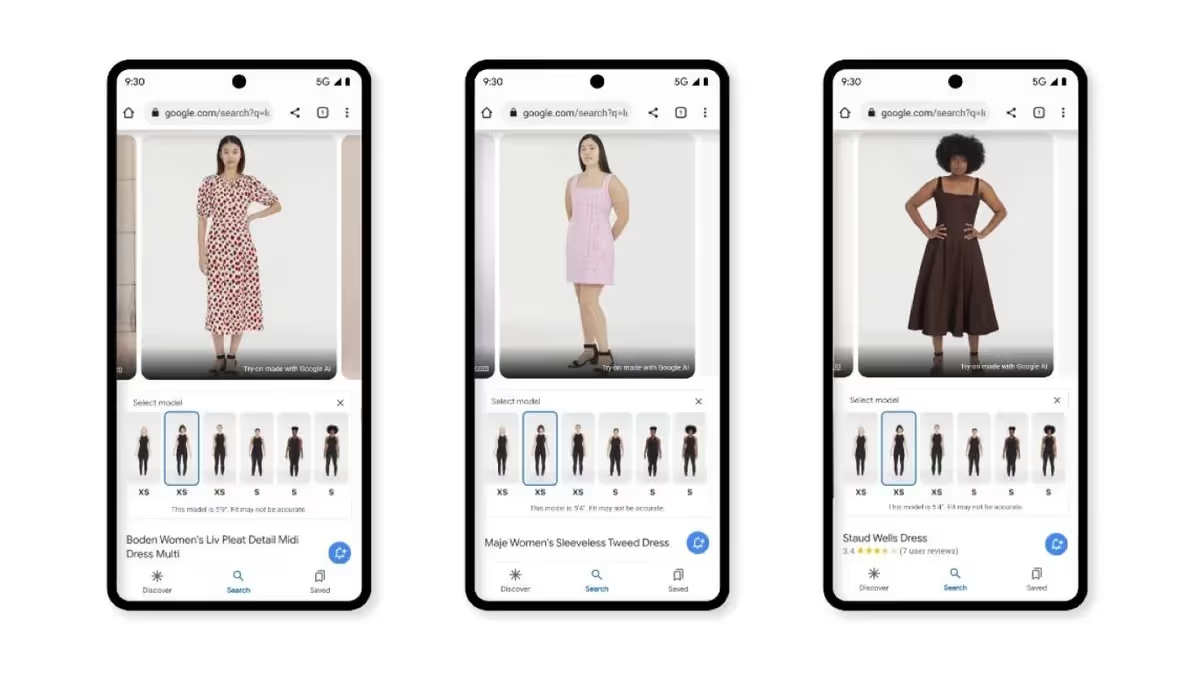
Google’s multisearch feature combines images with text to refine results. In this example, the user likely provided a photo of a sofa and added the word “white,” resulting in a tailored selection of white sofas with prices from various retailers. For luxury fashion, a shopper might snap a dress and add “red” or “silk” to find exactly the variant they want. This kind of refined search makes the shopping experience more personalized and efficient.
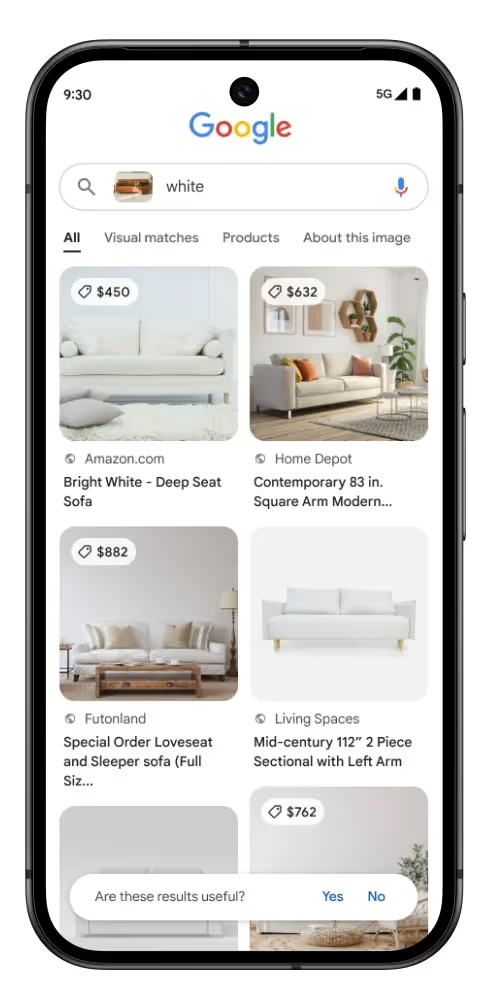
All these changes mean the luxury shopper’s journey becomes more fluid and interactive. Inspiration can come from anywhere, and the path to purchase is shortened dramatically. Instead of scrolling through countless items on a website, shoppers can rely on AI to present a curated set of options that match a given visual inspiration or preference. This level of convenience and personalization can increase customer engagement – shoppers spend more time exploring (because it’s fun and easy) and feel more confident in their finds, likely boosting conversion for luxury brands that show up in those searches.
Potential Challenges for Luxury Brands
While the technology opens new doors, it also poses challenges for luxury brands that are very protective of their image and distribution:
- Loss of Brand Narrative Control: Luxury brands carefully cultivate their branding and customer experience. With Google acting as an intermediary in product discovery, brands might lose some control over how their products are presented. The AI-generated descriptions or summaries might not capture the brand’s storytelling or could even contain inaccuracies. For example, an AI overview might describe a bag as “vintage-inspired” when the brand wants to position it as avant-garde. Brands also fear being “commoditized” – on a Google results page, a €5,000 Chanel bag might appear side by side with other bags or generic descriptions, outside the luxurious context of a boutique or official site. Maintaining brand image in such an open environment is a new challenge.
- Pricing Transparency and Discount Pressure: Google’s image search will readily show price comparisons across retailers. For luxury, this is a double-edged sword. Customers could instantly see if the same item is available for less from another source (perhaps an outlet, a foreign boutique, or a resale platform). Luxury makers traditionally avoid open price competition and often use selective distribution to keep prices high. Now, a savvy shopper in a Louis Vuitton store can Lens-scan a wallet and find that a trusted department store online offers 5% less, or that a second-hand platform has a like-new one for half price. This visibility of pricing can erode the aura of exclusivity and stable pricing that luxury relies on. It might also push brands into more frequent global price alignment or discourage heavy discounting in any one region, knowing those differences will be immediately exposed.
- Exposure of Counterfeits and “Dupes”: Visual search doesn’t inherently distinguish authentic products from lookalikes. There’s a risk that when someone searches for a luxury item, the results could include counterfeit listings or cheap “dupe” products that visually resemble the item. For example, a Lens search for a popular Gucci sneaker might return images from lesser-known e-commerce sites selling similar-looking shoes at a fraction of the price. The McKinsey State of Fashion 2025 report flagged a “surprising rise of dupes” in consumer behaviormckinsey.com – many shoppers, hit by inflation, actively seek out cheaper imitations of luxury styles. If Google’s algorithm shows those in the mix, it could direct traffic away from authentic products. Even though Google tries to police illegal counterfeit sellers, some may slip through, and many “dupe” products aren’t illegal, just look-alike. This presents a serious brand dilution and revenue threat for luxury companies.
- Data and Content Ownership: Luxury brands invest heavily in proprietary images and content. Google’s AI search essentially scrapes the web (including possibly a brand’s own site and others) to generate answers and show images. Brands may worry about their content being used to provide answers without users clicking through to their official site – similar to the concern publishers have with AI search snippets. If a user gets all needed info (price, reviews, description) from the Google summary, they might never visit the brand’s site or store, depriving the brand of a direct relationship. Additionally, any mistakes in that data (e.g., outdated pricing, wrong product name) would be hard for the brand to correct in real time.
- Dependence on a Third-Party Ecosystem: As discovery shifts to Google’s AI, luxury brands may feel pressure to integrate with Google’s systems (providing data feeds, participating in ads, etc.) to stay visible. This hands more leverage to Google. Smaller luxury houses especially might struggle with the technical integration or with bidding for ad placements against bigger competitors. If searchers gravitate to whatever Google surfaces first, brands might have to fight harder for that prime real estate in the results, potentially paying for placement where previously their own brand strength drew customers organically.
In summary, luxury brands face a balancing act: embracing the visibility that AI image search offers while mitigating the risks to brand prestige and distribution control. The industry’s exclusivity model will be tested in an environment of radical transparency and open competition.
Opportunities for Luxury Brands to Leverage the Technology
Despite the challenges, Google’s AI image search could be a powerful tool for luxury brands that adapt strategically. Here are ways brands can capitalize on this technology to enhance desirability and engagement:
- **Optimize and Protect Brand Presence: Brands should ensure their products are correctly represented in Google’s index and Shopping Graph. This means providing official images, detailed product data, and up-to-date pricing to Google (through Merchant Center feeds or schema on websites). By doing so, when someone searches for their item, the brand’s authentic content surfaces first. For instance, including rich metadata (like product descriptions and origin stories) can help the AI overview echo the brand’s narrative rather than a random wiki entry. The State of Fashion 2025 report explicitly advises that product content be optimized for AI search – luxury brands should take note and feed the AI quality information so that it “speaks” about the product in a way that aligns with brand values. This is also a form of defense: supplying Google with authorized images can help it distinguish official products from counterfeits.
Boost your AI Search and Google Search performance with enriched, up-to-date, and people-first product content. Feed Enrich by Dataiads enhances your product feed for maximum impression and relevance.
- Leverage Visual Search Ads and SEO: Since Google is introducing shopping ads into visual resultsweb.swipeinsight.app, luxury brands have an opportunity to buy prominent placement for their products. A savvy strategy could be to bid on visual searches for their own products or even competitors’ products (where appropriate) to capture high-intent shoppers. For example, a luxury shoe brand might place an ad such that when users Lens-scan a similar shoe by another brand, their offering appears as a “featured” alternative. Apart from ads, brands should also consider visual search SEO: publishing lookbooks and style guides on their sites that could appear in results. If an AI overview might list “other brands with similar styles,” you want your brand to be mentioned. Ensuring your brand’s name and images are associated with key luxury trends (through content marketing and PR) can influence what the AI algorithm finds and presents.
- Innovate with AI-Enhanced Content: Luxury is about experience and emotion, and AI can help amplify that. Brands like Hugo Boss are already using AI to create dynamic product content – for example, auto-generating videos of models wearing new collections. This not only streamlines content creation but also provides engaging media that can be used across platforms (including potentially in Google results). Luxury brands can similarly use AI to produce personalized lookbooks for customers or interactive campaigns (imagine an AI-driven style quiz that ends with a recommendation of products, which the user can then visualize via Lens). By embracing such tools, brands keep their image fresh and tech-forward, which resonates with younger luxury consumers. As one report noted, investing in tech, AI, and data to personalize the client journey is now a strategic imperative for luxury executives. In practice, this could mean using AI image recognition in the brand’s own app – e.g., a client snaps their wardrobe and the brand’s AI suggests a new handbag that complements what they own. The more brands play in this AI visual space, the more relevancy they maintain.
- Collaborate with Google on Pilot Programs: Given Google’s push into new shopping experiences (like the in-store Lens pilot for beauty and toys), luxury brands could volunteer to collaborate on category expansions. For example, a luxury fashion house might partner with Google to enable in-store visual search for apparel. They could agree to share inventory data in real time so that when a shopper uses Lens in their boutique, it confirms availability and perhaps even suggests an online order if a size/color is out of stock. Being early adopters in such programs can give brands a competitive edge and valuable insights. It also lets them shape how the technology is used for luxury. If brands work closely with Google, they might influence features (for instance, adding an authenticity badge for verified brand results, or a link to book an appointment with a stylist directly from search results).
- Enhance Customer Engagement and Storytelling: Luxury brands can turn the AI lens on themselves to create richer engagement. Consider an art gallery approach: a brand could encourage customers to Lens-scan campaign images or even store window displays to unlock AR experiences or exclusive content. For instance, pointing your phone at a new handbag ad might reveal a short video of the artisan craftsmanship behind it or show the bag in AR on your own arm. This blurs marketing and shopping, making discovery more interactive. Brands can also use the data from visual search (what items people are snapping, what styles they seek) to inform their design and marketing strategy, effectively listening to visual consumer preferences. By embracing these technologies, brands signal that they are innovative and customer-centric, which can boost their desirability among tech-savvy luxury buyers.
Importantly, the adoption of AI image search aligns with changing consumer expectations. According to industry research, 82% of customers want AI to help reduce the time spent researching what to buy. And 50% of fashion executives see improved product discovery as the top use-case for generative AI in the coming year. This means both consumers and industry leaders are ready for AI-driven shopping innovations. Luxury brands that leverage Google’s tools can meet customers where they are headed, providing immediacy and personalization without eroding the exclusive feel – provided they do so thoughtfully.
Improve product discovery with AI-driven personalized merchandising on fast, smart landing pages for Shopping ads traffic. Dataiads' Smart Landing Page technology optimizes your Shopping Ads for better engagement and conversions
Industry Insights: AI’s Growing Role in Luxury Retail
The convergence of AI and retail is a major theme in recent luxury industry reports. The BoF-McKinsey State of Fashion 2025 report highlights that after years of digital overload, consumers now “bemoan the difficulty of finding what they want” amid endless choices, and AI-powered curation and search are the remedies. In other words, effective use of AI (like visual search) can cut through the noise and present the right product to the right customer – a crucial capability as luxury consumers become more discerning and less patient.
Furthermore, luxury’s current market dynamics make AI integration timely. With a potential slowdown in luxury spend and clients expecting more for their money, brands must elevate the customer experience to win loyalty. McKinsey’s State of Luxury 2025 urges executives to “rethink client engagement strategy” and invest in tech, AI, and data to personalize journeys. AI image search is a clear example of such an investment on the customer-facing side – it personalizes and streamlines the discovery phase of the journey.
Industry experts also note that AI can enhance the “luxury experience” rather than detract from it, if used well. As luxury retail is “about emotions, not transactions,” brands can use AI to tap into emotions – for example, using visual AI to show a client how stunning they’d look in an outfit (emotional appeal) rather than just telling them the specs of the dress. The goal is to make the online or mobile experience as inspiring as a walk through a flagship store. AI’s ability to serve up rich media, stories, and perfectly tailored options can actually augment the storytelling and personal touch that luxury is known for, at scale.
There’s also an opportunity in using AI to combat longstanding issues in luxury retail, such as counterfeit goods. As visual AI gets better at identifying fine-grain image details, it could help authenticate products. While our focus has been on Google’s search, other AI solutions (some mentioned in industry news) can identify a fake handbag from a photo by analyzing patterns invisible to the human eye. Luxury brands may collaborate with tech firms so that in the future, a shopper could Lens-scan a second-hand item and get an authenticity verdict powered by AI. This kind of application would increase trust in the resale market and keep customers more firmly in the legitimate luxury ecosystem.
In summary, expert consensus is that AI will be an integral part of luxury retail’s future – from discovery (as Google’s image search exemplifies) to personalization and even operations. Brands that adapt to these tools will be better positioned to navigate the challenges of a slow-growth, high-expectation environment. Embracing AI doesn’t mean sacrificing the exclusivity or creativity of luxury; rather, it can enhance brand desirability by making every interaction with the brand (digital or physical) more engaging, informative, and tailored to the consumer. As one luxury CEO put it, the industry must marry high-tech with high-touch. Google’s AI image search is a clear manifestation of the “high-tech” side – and it’s up to luxury brands to add their trademark high-touch, human element on top, creating a truly elevated customer experience.
Continue reading
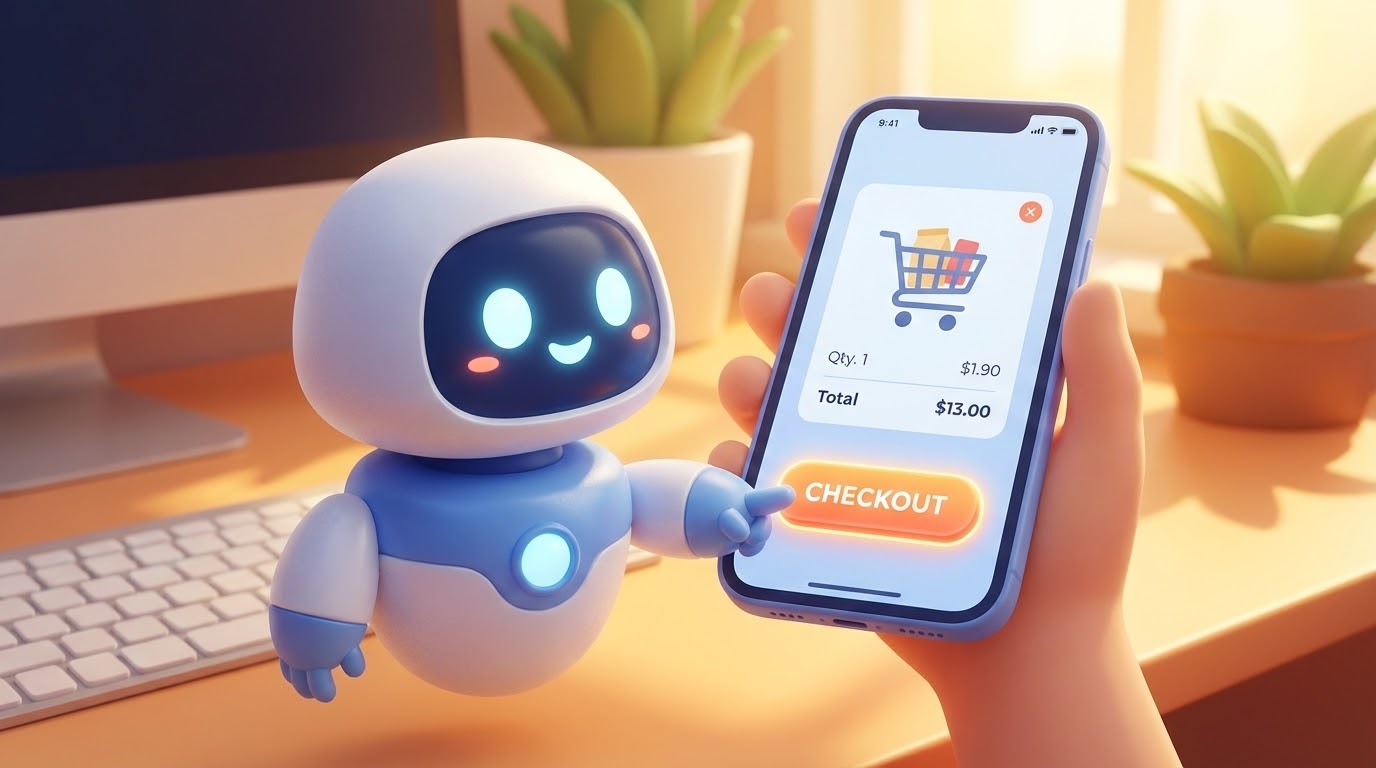
Agentic AI and New Shopping Dynamics: Understanding the Rise of AI-Driven Shopping in 2026
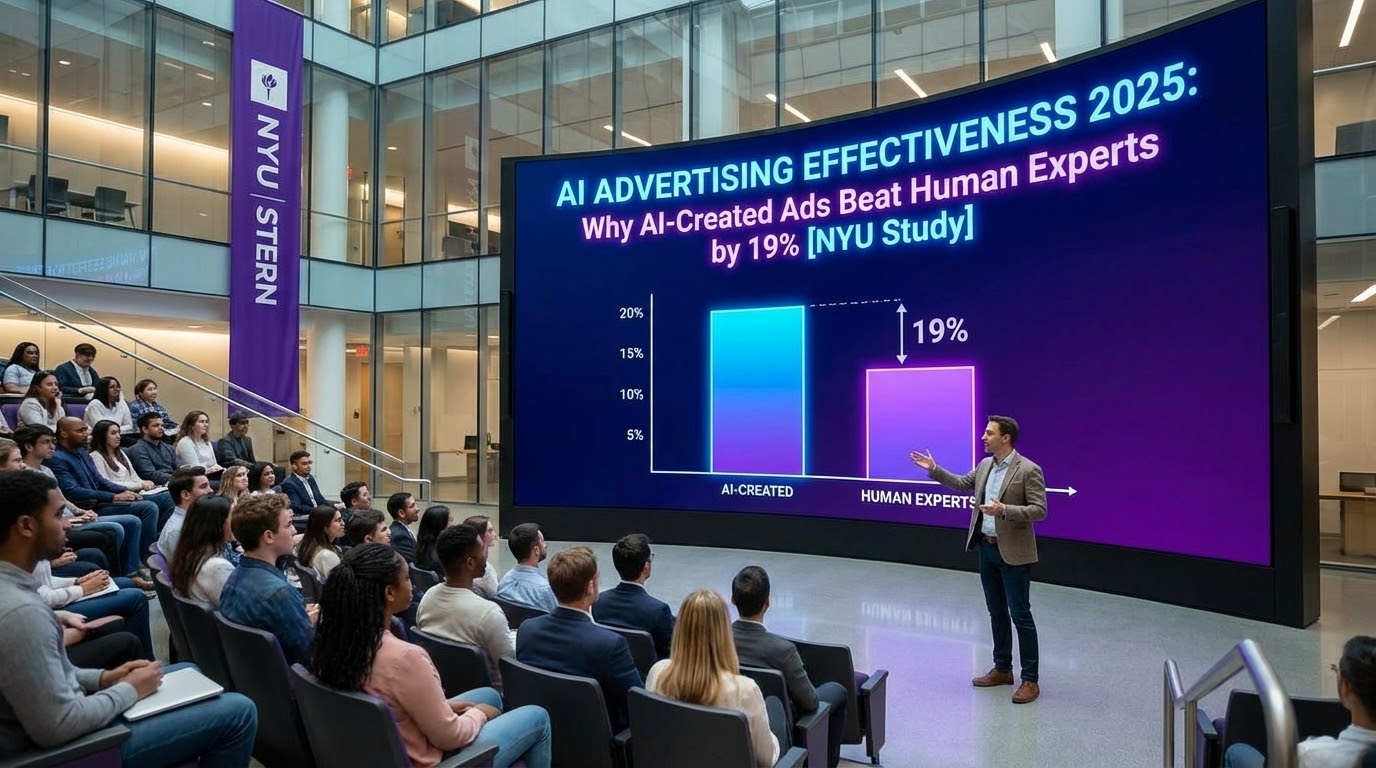
AI Advertising Effectiveness 2025: Why AI-Created Ads Beat Human Experts by 19% [NYU x Emory Study]

Nano Banana Pro: Full analysis of the latest Google 2025 Image Generation Model
.svg)







